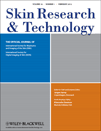Thermography as a predictor of postherpetic neuralgia in acute herpes zoster patients: a preliminary study
Abstract
Background/purpose: Infrared thermal images in patients suffering from herpes zoster (HZ) may exhibit thermal asymmetry due to the unilateral distribution of HZ lesions. This study examined the usefulness of infrared thermography in acute HZ as a predictor for the development of postherpetic neuralgia (PHN).
Methods: The authors collected demographic and clinical data including age, sex, onset of skin lesion, pain intensity by a visual analogue scale (VAS) and the development of PHN from a total of 55 patients diagnosed with HZ. We evaluated the body surface thermographic parameters between the lesion and contralateral normal skin: maximal difference in the temperature (ΔT) and the size of the body surface area (BSA) showing thermal asymmetry.
Results: Temperatures of the lesions were found to be warmer than the control side in most patients with acute HZ. We compared the patient group who developed PHN with those who did not. In univariate analysis, patients with PHN were older (P=0.004), had a higher VAS score for pain (P<0.001), higher ΔT (P<0.001) and larger BSA (P=0.001). In logistic regression analysis to identify independent risk factors of PHN, older age (>60 years old) and ΔT more than 0.5 °C were found to be statistically significant.




